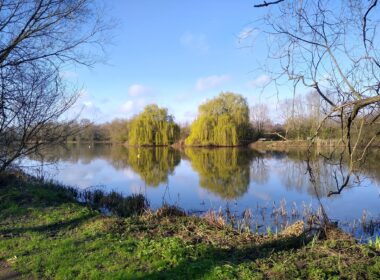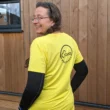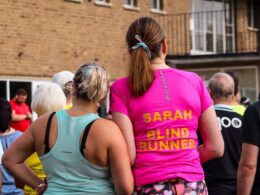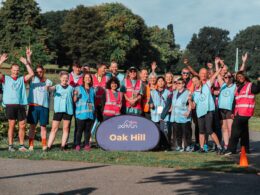By Jonathan S. Bean:
What gives a parkrun its unique character? Given the distance is always the same, it can only be the location and community around the events. Coast or city; 100 finishers or 1,000. The character of a parkrun can make a big difference in how we experience it, as well as the benefits to those taking part. An event might help strangers make friends with people they wouldn’t normally meet. (If you want more on that, check out our feature on making connections at parkrun on page 44). And sometimes, it can help welcome people into spaces that might previously have felt off-limits. One place where both those benefits are really obvious is in parkruns hosted or supported by a university.

When you ask universities why they support parkrun, the most common reason you will hear is the wellbeing benefits to students, staff – and to the wider community. Ian Edwards, co-event director at Colney Lane parkrun at the University of East Anglia (UEA) explains, “Lots of students experience mental health challenges during their studies, including anxiety, depression and feeling isolated. parkrun is a great way of connecting with other people and reducing stress levels.”
Amy Rose O’Hanlon, co-event director at Oxford’s University Parks parkrun, says parkrun is particularly good for their many international staff members, who may not have local friends or family outside of work to switch off and relax with. “They find it a great way to get to know other people in the city,” she says. Oxford’s University Parks parkrun began in 2022. Amy says that Oxford University is now “very, very keen on parkrun” because it chimes with their commitment to build community engagement, and because it really helps open up spaces to local people beyond the university.
The University of Edinburgh even contributed to the start-up costs of Holyrood parkrun, which takes place in the parkland around Holyrood Palace. Jamie Thin, the co-event director, explains that because it is a Royal Park, they had to get permission first from Queen Elizabeth II and then King Charles III – although not directly! parkrunners will be glad they did, because it really is an impressive location, overlooked by the mighty hill of Arthur’s Seat.
Whilst university campuses are often lovely areas, with landscaped grounds and open spaces, they can sometimes feel inaccessible or unfriendly to people who aren’t involved with the university. Colin Sinclair, event director at University of Stirling parkrun says, “We have local people who’ve never been on the campus and think it’s not for them, which is not true.” By inviting people onto the campus, the parkrun helps change these ideas. Far from viewing 200 people arriving on the campus every Saturday morning as an inconvenience, Stirling welcomes them with open arms.
One quirk of university parkruns is that they don’t all have high numbers of students taking part. That might be because students need to prioritise part-time work, or perhaps are visiting friends and family on weekends. And of course, students often have plenty of other opportunities to be active. Some parkruns put up posters and notices on campus, or have stands at freshers’ fairs to attract students. But these might not be as effective as the power of word of mouth – friends introducing friends, or people seeing an event taking place in their local area. If it works for staff it works for students too!
Word of mouth recruitment is certainly something Ian Edwards at Colney Lane practices: “I teach law at UEA and I always make a point in my lectures of selling the benefits of parkrun to my students. It’s fantastic when we see students starting their parkrun journey with us!”
University parkruns are really special. Like all parkruns, they boost community interaction and bring different people together in places that they might not normally visit. But they also open up some lovely locations to new people – and bring many benefits to everyone who takes part.
Colney Lane parkrun, Norwich (pictured above):
- Takes place at the University of East Anglia’s Colney Lane playing fields.
- The campus is famed for the ‘new brutalist’ style of its buildings, designed by Denys Lasdun, who also designed the Royal National Theatre on London’s South Bank.
- University alumni include the current King of Tonga, Tupou VI; Nobel Prize winning author Sir Kazuo Ishiguro; and comedian and ventriloquist, Nina Conti.
University of Stirling parkrun, Stirling (pictured below):

- Starts at 9.30am, as per other Scottish parkruns.
- Began in autumn 2019, so had only been going for a few months before Covid-19 forced them to pause activities.
- The university grounds include the historic Airthrey Castle, 60,000 acres of woodland and a wildlife-filled loch.
- Tennis player Sir Andy Murray has been granted Freedom of the City of Stirling.
University Parks parkrun, Oxford:
- The most central of Oxford’s parkruns.
- It is said that Charles II walked his dog in this area in 1685 and there is a memorial bench to JRR Tolkien in the park.
- It’s not that far from the famous Iffley Road track, where Sir Roger Bannister first broke four minutes for the mile in 1954.









